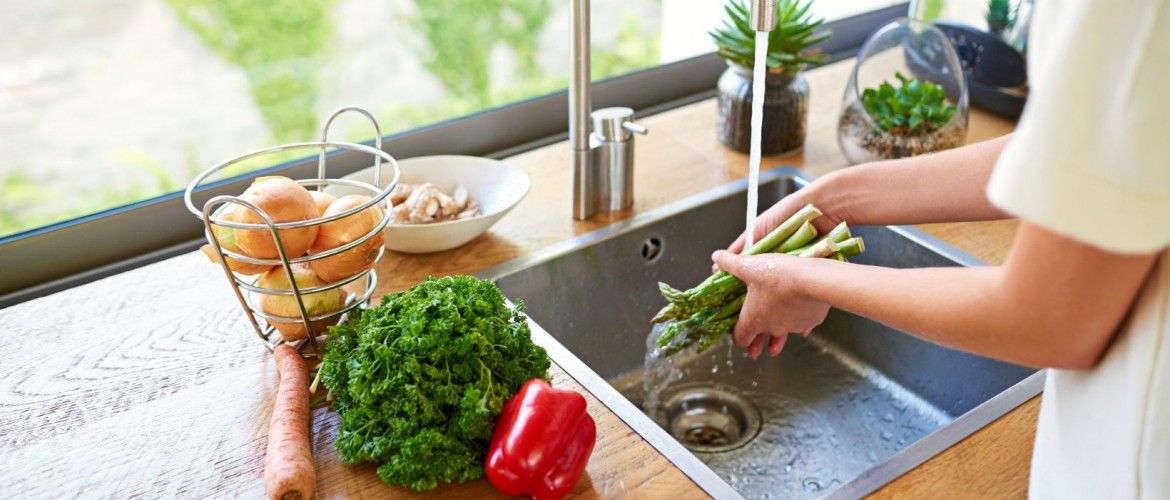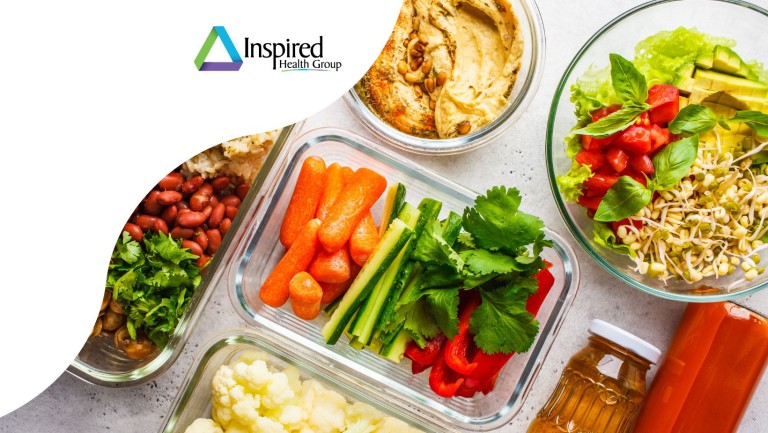Microplastics are everywhere. Even in our food! Dietitian Nutritionist, Nicole Moretta, shares some tips on how to reduce exposure to microplastics in your diet.
What are Microplastics?
So what’s the buzz about microplastics? Microplastics are tiny plastic particles that result from both commercial product development and the breakdown of larger plastics. Microplastics are everywhere, including in the air, water, and our bloodstream!
While the health effects of microplastics are still being studied, chemicals added to make plastic suitable for particular uses are also known to cause problems for humans. Some of these chemicals are endocrine disruptors that have been linked to developmental effects in children and problems with reproductive systems and metabolism in adults. While others are associated with adverse effects on fetal development and reproductive problems in adults along with insulin resistance and obesity. And flame retardants that make electronics less flammable are associated with endocrine, reproductive and behavioral effects.
Exposure to microplastics exposes us to all of the chemicals in plastics, including the ones known to be harmful to our health. While the conversation is much deeper than nutrition alone, there are ways to help reduce your exposure to microplastics by focusing on what you eat and how you store your food. Here are some quick tips for reducing microplastics in your diet:
Drink tap water
Water from plastic bottles has about double the microplastic level of tap water on average, according to a 2018 study. Your tap water is likely probably safer to drink than bottled water unless it is contaminated with with unsafe elements sure as lead. Find out more about your tap water on EWG's tap water database. You can always filter your tap water before you drink it. Some filters even further reduce microplastic levels.
Swap your plastic bottle for stainless steel, glass or silicone:
Fill up a metal, glass or silicone reusable bottle for when you go out. Try not to rely on plastic bottles or buying bottled water when you're out and about.
Here are some examples of non-plastic alternatives***:
- Klean Kanteen Insulated Classic 20oz
- Contigo Purity Glass Water Bottle, 20oz,
- Klean Kanteen Kids' 12 Oz Classic Narrow W Sport Cap
- Silicone Training Cup & Straw for Toddlers | 6 Months+
- Evenflo Feeding Classic Glass Twist Bottles
Store your food in glass, stainless steel or silicone:
Plastics break down and microplastics enter your food when it is stored in plastic. Use reusable glass, stainless steel, silicone, or aluminum foil to avoid adding more microplastics into your diet. Transfer restaurant leftovers into a plastic-alternative container to reduce plastic breaking down and entering your food when it's stored in your fridge.
Here are some examples:
- Pyrex Meal Prep Simply Store Glass Rectangular and Round Food Container Set
- Stasher Reusable Silicone Storage Bag, Food Storage Container
- LunchBots Small Protein Packer Bento Box
- LunchBots Tiny Dips Condiment Containers
Reheat your food on the stove and microwave in glass:
Avoid microwaving your food in plastic. Reduce your consumption of microplastics by reheating your food on the stove or microwaving in glass.
Buy more fresh fruits & vegetables:
When possible, try buying more fresh fruits and vegetables and less foods in plastic bags and containers. You can bring your own reusable produce bags to the grocery store instead of storing your fruits and vegetables at home in plastic bags.
Wash your produce:
From a food safety standpoint, we can wash and rinse our produce. A produce wash or spray can be made at home using ingredients you may already have! When time allows I like to wash produce in bulk when I bring it home from the store. I fill the sink or a large container with water and add ½ cup of vinegar and 2 Tablespoons of salt. I just move the produce around while it soaks for 20-30 minutes. When you don’t have time for the soaking process you should at least rinse produce in cold water and use a spray and rinse again. I like this recipe for both the soak and spray
This process can help remove many harmful things we don’t want to consume, including bugs and other contaminants that could cause a food-borne illness or at very least some gastrointestinal issues. When making the spray look use a glass bottle.
Upgrade your cooking utensils:
What material is that spoon that you use to stir your favorite soup while you cook? If it's plastic, consider swapping it for stainless steel, wood or silicone if possible!
Examples include:
Again, when it comes to microplastics, this topic is much bigger than what is covered here, but these quick tips could be a nice place to start in reducing your exposure. Taking small steps can have a big difference in your life.
- Nicole Moretta, MS, RD, CDN
Registered Dietitian Nutritionist at Inspired Health Group
Share with a friend on YouTube
*** Inspired Health Group and our team members have no affiliation with the product examples listed above. They serve as examples of types of plastic alternative products. Purchase and use at your own risk.

